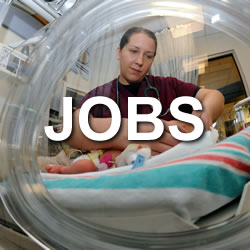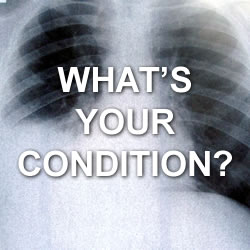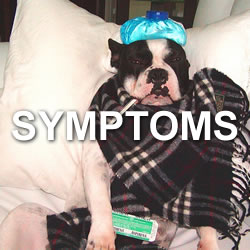Slipped Capital Femoral Epiphysis (SCFE)
Always consider SCFE in the differential diagnosis of a patient with non-traumatic hip, groin, thigh or knee pain - Mike Cadogan

image by: Dr. John Fathy Clinic عيادة دكتور جون فتحي
HWN Recommends
Slipped Capital Femoral Epiphysis
Danielle's limp seemed to come out of nowhere. She came home one day and we noticed it right away; it had to be the result of a fall or some sort of injury. I immediately checked to find if there was an "obvious" injury. Though Danielle is very bright and understands almost everything she's told, at 12 years old, her verbal skills are almost non-existent. I asked her if she was hurt and she said, "yes, hurt".
That's when the process of elimination begins; starting with her foot and working up to her back. It was clear that her foot was okay and her ankle seemed to have full motion. Her knee wasn't swollen and she was able to move it with no…
Resources
 Legg Calve Perthes Disease vs Slipped Capital Femoral Epiphysis
Legg Calve Perthes Disease vs Slipped Capital Femoral Epiphysis
Legg Calve Perthes Disease (LCPD) A rare vascular femoral condition in children that affects the hip, this occurs when the blood supply to the rounded head of the femur(thigh bone) is temporarily disrupted causing vascular necrosis, a process in which bone cells die from lack of adequate blood supply. Slipped Capital Femoral Epiphysis (SCFE) is a condition that primarily affects adolescents during their growth spurt. It involves the displacement of the ball at the upper end of the thigh bone (femur) from the hip joint.
Medical Mystery: Sudden thigh pain sidelines young athlete
The risk of this condition is higher among kids who are overweight, and also among boys. Many times, diagnosis is delayed because pain is referred to the knee or thigh (as in my patient). As time goes on, the femoral head slips more and more, like a scoop of ice cream slowly slipping off the cone on a hot day.
SCFE- The Story of My Little Skiffy
So began our journey with SCFE. A SCFE is when the ball slips off of the femoral neck like the ice cream slipping off of a cone. Doctors don't know why it happens but it occurs in 1 out of every 100,000 kids.
SCFE... what?! EMERGENCY Surgery... what?!
After mentioning S.C.F.E. to Jeremy he sent us on to a sports medicine theropiist within the hour. Tony Cox checked Zak's gate, talked to him, and measured his legs. His right leg, the sore one, was one inch shorter. He immediately went up stairs to Dr. Matthews, an orthopedic surgeon, and had us in front of him within an hour! Dr. Matthews x-rayed and diagnosed him with SCFE.
The Impact of Childhood Obesity on Growing Joints
Another condition that has impacted a growing number of children is SCFE or Slipped Capital Femoral Epiphysis. In this condition a weakened growth plate causes the upper end of the femur (thigh bone) to slip backward in the hip joint. Although the incidence for SCFE is 10.8 cases per 100,000 children, the rate is higher among obese children.
 Slipped Capital Femoral Epiphysis
Slipped Capital Femoral Epiphysis
As Danielle was getting off of the school bus, I noticed she was noticeably limping on her right side. I thought that she may have twisted her ankle at school; perhaps in PE class or running around school.
Adolescent Hip Pain
Slipped Capital Femoral Epiphysis (SCFE) is the most common hip pathology in adolescents, it involves displacement at the epiphyseal plate (growth plate) involving the epiphysis and metaphysis.
Core EM
Patients may present with isolated knee or thigh pain without any hip pain, which can lead to delayed diagnosis and worse outcomes. SCFE is usually seen in adolescent, obese patients. However, it can also be seen in tall, thin patients who have recently undergone a recent growth spurt.
Pediatric EM Morsels
Because the outcomes are significantly affected by the severity of the slip, it is necessary for us all to keep SCFE on our radar when evaluating a child with a limp or leg pain (even if it isn’t the hip or groin).
Rebel EM
Always consider SCFE in the differential diagnosis of a patient with non-traumatic hip, groin, thigh or knee pain.
Bone Talks
A SCFE occurs when a weak spot in the growth plate causes the "ball" portion of the hip to slip out of position. The name "slipped capital femoral epiphysis" is a misnomer because the femoral head (aka "capital femoral epiphysis") actually stays in within the hip socket while the femoral neck "slips" forward (aka anterior) and rotates outward (aka external rotation). A SCFE is not a crack in the bone, but more like a crack in the growth plate.
Ortho Blog
Slipped capital femoral epiphysis (SCFE) is a disorder where the femoral epiphysis displaces from the femoral neck through the physeal plate. It is a common hip disorder in adolescents affecting approximately 10 per 100,000. Note however, about 15% will present with no description of hip pain but rather knee or thigh discomfort. Thus it is important to maintain a high degree of suspicion to diagnose and treat early.
Ortho Bullets
Symptoms ◦groin and thigh pain ◾most common presentation ◦knee pain ◾can frequently present as knee pain (15-23%) ◦motion ◾patients prefer to sit in a chair with affected leg crossed over the other ◦duration ◾symptoms are usually present for weeks to several months before diagnosis is made.
Ortho Kids
Most patients complain of pain in the groin or hip, but some patients complain of pain in their thigh or knee. The patient may not be able to walk or may walk with a limp. Sometimes the patient may walk with the affected leg turned outward. Many kids have been told they have growing pains or a muscle pull because of the thigh and knee pain.
Radiopaedia
Slipped upper femoral epiphysis (SUFE), also known as a slipped capital femoral epiphysis (SCFE), (plural: epiphyses) is a relatively common condition affecting the physis of the proximal femur in adolescents. It is one of the commonest hip abnormalities in adolescence and is bilateral in 20-40% of cases.
StatPearls
Slipped capital femoral epiphysis (SCFE), also called slipped upper femoral epiphysis (SUFE), is the most common hip pathology in pre-adolescents and adolescents. However, this diagnosis is often delayed or missed due to either atypical presentation, such as thigh or knee pain, or the chronic nature of the presentation.

Introducing Stitches!
Your Path to Meaningful Connections in the World of Health and Medicine
Connect, Collaborate, and Engage!
Coming Soon - Stitches, the innovative chat app from the creators of HWN. Join meaningful conversations on health and medical topics. Share text, images, and videos seamlessly. Connect directly within HWN's topic pages and articles.













